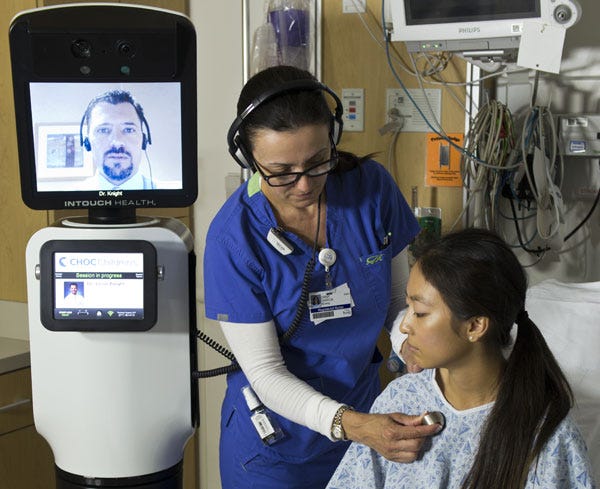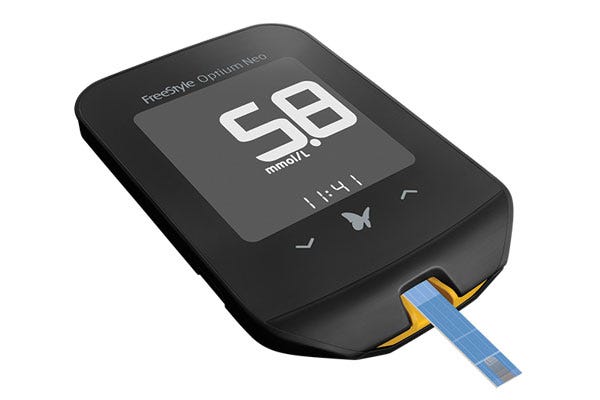4 Ingenious Medical Devices That Help Hospitals Save Cash
April 16, 2014
Medical device makers are actually a lot like textbook publishers.
Textbook publishers managed to score significant profits by frequently publishing new editions of their books that were only marginally different than the previous versions while convincing their customers to upgrade anyway.
All the while, the costs of textbooks skyrocketed, increasing by 82% from 2002 to 2013, according to the Government Accountability Office.
The same type of thing happens with a big-ticket, cutting-edge medical gizmo such as a surgical robot. It is an end-all-be-all for many health providers, and all medical device companies have had to do was engage in incremental improvements in order to keep or inflate the price tag high for such devices.
It is little wonder that during a similar time period--2002 to 2012--U.S. health expenditures grew by 70.5%, to $2.8 trillion, according to the Centers for Medicare and Medicaid Services--though that growth was driven by an array of factors.
But times are changing now that healthcare takes up nearly a fifth of U.S. gross domestic product, spurring a health reform with reimbursement mechanisms that promote more efficient patient population management. Now the emphasis is on affordability, and improved patient monitoring to catch serious health problems before they crop up.
This doesn't mean that medical devices are getting boring, though. The reality is far from it.
In the same way that physical books are so last decade--with students reading on Kindles and iPads--the technologies that will save the health system money and improve the health of patients can be pretty innovative.
From a zipper-like wound closure device to a telemedicine robot, many of the finalists in this year's Medical Design Excellence Awards (MDEA) have the potential to dial down overall healthcare expenditures in ways that are mind-boggling. (The winners of the contest will be announced at MD&M East in June.) Here are four examples:
1. Zip
|
The Zip provides a method of closing an incision that is reportedly 57% faster than stitches. |
Manufactured by ZipLine Medical Inc. (Campbell, CA), Zip is a noninvasive surgical skin closure alternative to sutures and staples. Zip boasts time-savings, better cosmesis, and greater patient comfort. To apply the device is a simple matter: a physician places two adhesive strips next to the wound, and then closes it with ratcheted plastic ties. The device reportedly cuts the time to close an incision by 57% compared with stitches. It also could potentially save the health system money by cutting infection risk. A single incidence of surgical site infection costs an average of $25,546, according to one study. In addition, the ZipLine device spares patients from having to go back to have stitches removed; they can do it themselves at home. Supply and design credit to Innovative Drive LLC (Redwood City, CA).
2. RP-VITA
|
In the long run, telemedicine systems such as the RP-VITA can be used to boost the efficiency of physician-patient interaction. |
A robot seems like a pretty big-ticket item. But if a patient can get a health problem taken care of sooner with a specialist because of this remote presence telemedicine robot, it could prevent many serious and costly health problems down the road.
Manufactured by InTouch Health Inc. (Santa Barbara, CA), RP-VITA provides high-acuity telemedicine consults. It also does away with the need for telemedicine-specific staffing because it can actually drive itself around an emergency room or intensive care unit. Its intuitiveness, ease-of-use, and safety features encourage physician adoption and clinical use. (Supply and design credit go to iRobot of Bedford, MA.)
InTouch has actually been engaged in remote-presence telemedicine for a decade. "The whole idea of this remote presence is to enable the right clinical expertise to be at the right place and the right time. If you can do the right thing on sick patients on a timely basis, you can improve quality and reduce costs. ... The objective is to make it easier and easier for the physician expert to perform the tasks they would do as if they were there," says InTouch Heaalth CEO Yulun Wang.
It can be a hindrance, however, for a physician to access a telemedicine robot on the go if they need to pack along a joystick to navigate the robot to wherever it needs to be inside a hospital. What iRobot was able to do for InTouch with the RP-VITA was to combine multiple types of sensors and sophisticated software algorithms that enable the robot to drive itself from its docking station to wherever it needs to be, and then back.
An infrared grid, invisible to the human eye, is projected through the health care facility, which the RP-VITA picks up with its own infrared camera to engage in navigation. Simultaneously, the robot is also utilizing light- and sound-based sensors to further understand its positioning, Wang said.
Specifically, the RP-VITA uses a fusion of date from LIDAR, sonar, and PrimeSense sensors to map, avoid obstacles and navigate autonomously.
InTouch employs a razor-razorblade strategy with the RP-VITA, charging $5000 to $6000 a month to service and support a single robot. But the robot would pay for itself if, say, a stroke was caught early in just one patient because a specialist was able to remotely access them in an ER. Long-term care costs would then be avoided.
"We're trying to figure out how to provide higher quality at a lower cost. That's the objective here," Wang said.
3. FreeStyle Optium Neo
|
The FreeStyle device from Abbott Diabates Care can boost the efficacy of diabetes care while helping patients avoid expensive complications. |
Manufactured by Abbott Diabetes Care Inc. (Alameda, CA), this blood glucose and ketone monitoring system is a great example of the type of intuitiveness and ease of use that people take for granted with smartphones--but still sorely lack with medical devices. Diabetics who are better able to manage their condition avoid expensive complications over the longterm, too. By streamlining management of diabetes, the device can help patients as well as hospitals and clinics save money. The FreeStyle Optium Neo actually guides patients through their diabetes and insulin management. Set up by a healthcare provider, the meter stores, displays, logs, and suggests insulin dose adjustments. There are also notifications when it comes to high or low blood glucose levels and trends. (Note here: This is not for sale yet in the United States.) Supply and design credit to Bridge Design (San Francisco).
4.MuV Patient Transfer System
|
The MuV patient transfer can help reduce costly injuries stemming from moving patients in a clinical setting. |
A patient population that is healthier overall could greatly reduce healthcare expenditures. The same goes, however, when it comes to preventing workplace injuries in clinical settings. As many a nurse will tell people, moving patients can take a heavy physical toll. Made by CEGA Innovations LLC (Sioux Falls, SD), the MuV patient transfer system is lightweight and ergonomically designed to not only reduce patient stress but also lessen the burden for hospital workers during patient transfer. It reduces workplace injuries and increases efficiencies and reimbursement criteria. (Entry submitted by and supply and design credit to Kablooe Design of Blaine, MN.)
"It was a challenge to design a device that was not simply better than existing technologies; it had to be significantly better and cost-effective," said Aaron Emerson, CEGA Innovations' president.
CEGA had the basic concept behind the device when it approached Kablooe more than a year ago, said Matthew Rust, director of product development at Kablooe. Versus other methods such as using the sheets underneath the patient, sliding a plastic board underneath the sheets, or using balloons to help ease a bed transfer, CEGA's device would employ rollers. It would be partially slid under the patient's torso and lower back, and then a clean absorbent sheet stuck on the belt and rollers would be pulled to move the patient across the MuV and onto the new bed.
What Kablooe was able to do was employ its industrial design and materials know-how to ensure it could be easily assembled in a plant and easily used and maintained in a medical setting. The MuV needed to weigh less than 15 pounds so that a nurse or other health staff person could easily carry it around, but it had to be able to withstand the weight of a 300-pound patient if need be.
Rust says Kablooe turned to computer modeling to design the MuV's aluminum frame and supports in much the same way that an engineer designs a modern bridge, to channel weight and stress so that the frame could be as minimal as it could be while supporting the most weight possible.
Another engineering challenge involved the belt material, which had to be sticky and waterproof on the outside to provide grip, but sleek on the inside so that the belt would easily move. Kablooe settled on a sleek nylon fabric that could be coated with an adhesive polyurethane coating on the outside. The metal back underneath the rollers and belt is painted with a sleek powder coat material that allows the belt to continue to slide by. Lines are also painted on the belt so that medical staff can easily line up the sheet when sticking it on the belt.
Another Kablooe idea involved placing handles on each side of the belt and rollers so that they can easily be popped out of the frame for cleaning. The belt itself can then be slid off the rollers and replaced.
"There are just so many parts and pieces that have to act as a system ... a lot of considerations," Rust said.
Chris Newmarker is senior editor of MPMN and Qmed. Follow him on Twitter at @newmarker. Brian Buntz is the editor-in-chief of MPMN and Qmed. Follow him on Twitter at @brian_buntz.
About the Author(s)
You May Also Like






